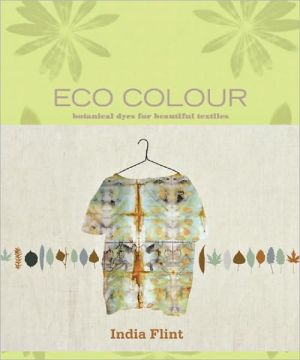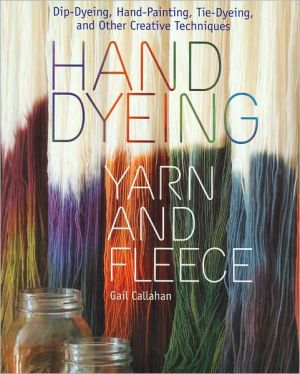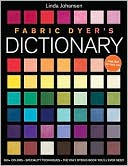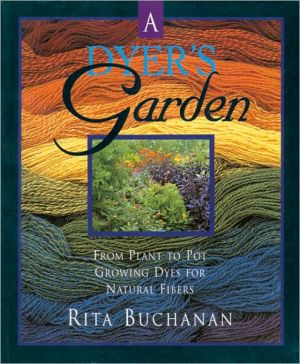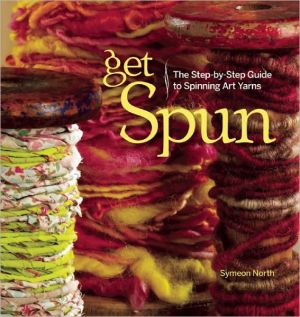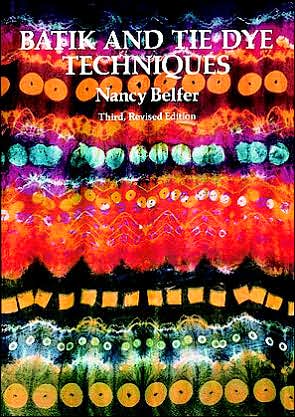Eco Colour: Botanical Dyes for Beautiful Textiles
The essence of plants bursts forth in magnificent hues and surprising palettes. Using dyes of the leaves, roots, and flowers to color your cloth and yarn can be an amazing journey into botanical alchemy. In Eco Colour, artistic dyer and colorist India Flint teaches you how to cull and use this gentle and ecologically sustainable alternative to synthetic dyes.\ India explores the fascinating and infinitely variable world of plant color using a wide variety of techniques and recipes. From...
Search in google:
The essence of plants bursts forth in magnificent hues and surprising palettes. Using dyes of the leaves, roots, and flowers to color your cloth and yarn can be an amazing journey into botanical alchemy. In Eco Colour, artistic dyer and colorist India Flint teaches you how to cull and use this gentle and ecologically sustainable alternative to synthetic dyes. India explores the fascinating and infinitely variable world of plant color using a wide variety of techniques and recipes. From whole-dyed cloth and applied color to prints and layered dye techniques, India describes only ecologically sustainable plant-dye methods. She uses renewable resources and shows how to do the least possible harm to the dyer, the end user of the object, and the environment. Recipes include a number of entirely new processes developed by India, as well as guidelines for plant collection, directions for the distillation of nontoxic mordants, and methodologies for applying plant dyes.Eco Colour inspires both the home dyer and textile professional seeking to extend their skills using India’s successful methods. Biography India Flint is a designer, artist, writer, and sheep farmer. Her work has been greatly influenced by her extensive travels—from Melbourne to rural Austria to Montreal. She is known for the development of the highly distinctive eco-print, an ecologically sustainable plant-based printing process giving brilliant color to cloth. Flint has been working with plant dyes for more than twenty years, and she has artwork in a myriad of collections and museums in Australia, Latvia, and Germany. She currently lives in South Australia.
PrologueWhat this book is forPart One Before You Begin Natural Dyes – a context Discovering dyes Dyeing and cooking: some links The true cost of synthetic dyes Regionalism A renewable color paletteCollecting Plants – a protocol Backyards and gardens What’s in a name? Garbage and windfallsPart Two The Workspace Equipment and a place to work Equipment Storing samples On the RoadHarvesting and storing plants for dyeing Safe practicesPart Three Natural Dyestuffs Some traditional dye materials The edible dye gardenPart Four Preparing, Processing and Applying Dyes Preparing to dye Treating the fiber before dyeing Animal Fibers Plant fibersMordants Wool Cotton Silk Looking for alternatives Tannin Protein Alkalis Acids Metals Method of mordant assessment Pre-mordantsProcessing plant dyes Dye application processes Some curiosities to be derived from sequential extractionsPart Five Some Special Dyeplant Groups Eucalyptus dyes Beyond the eucalyptus Ice-flower dyes Process Variations Plants to try Fruits and berriesPart Six Special Effects Cold-bundled eco-prints Fixing the color What next? Non-eucalyptus eco-prints using hot-bundling Hapa-zome – beating color into cloth Dyeing wool yarn and silver Basic procedure Dyeing multicolored yarns and silver in a microwave oven Multicolored yarns using scrap metals and plant dyes Multicolored yarns Printing with plant dyes Using shibori techniques and layered dyeing Hexagonal or honeycomb patterns Tartan patterns Checkerboard patterns Multicolored fabrics Resists Block printing Batik – wax resist Egg Solar Dyeing Process Mud and cow patties Mud Cow pattiesPart Seven Some Other Considerations The importance of water The importance of time Caring for cloth Silk Wool Cotton, linen, ramie and hemp Disposal of wastes Liquids Vegetable matterPart EightReferencesFurther readingWebsitesIndexAbout the AuthorAcknowledgements
